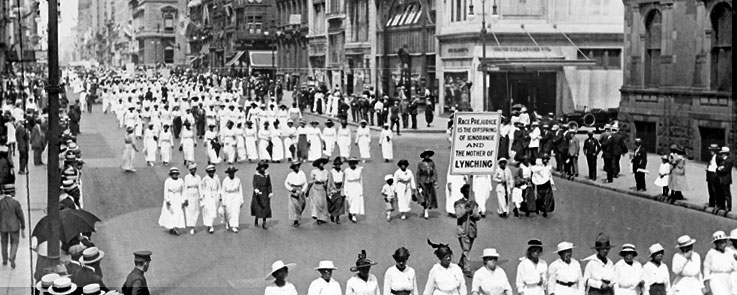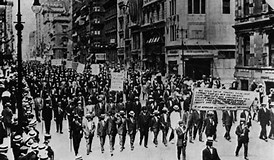In 1910, W.E.B. Du Bois founded The Crisis magazine as the premier crusading voice for civil rights. The Crisis explored past and present issues concerning race and its impact on educational, economic, political, social, moral, and ethical issues. Throughout the years, social reform movements were on arise, and organizations like the National Association for the Advancement of Colored People took a huge stance against racism at all angles.
The NAACP’s mission is to ensure the political, educational, social and economic equality of minority group citizens of United States and eliminate race prejudice. They seek to remove all barriers of racial discrimination through democratic processes.
Journalists and investigators risked everything they had to get the truth out about lynching. The NAACP, had high officers within their organization discreetly offering money for evidence of actual mob lynching’s. This evidence would be posted in newspapers, and magazines to expose the mishaps and the wrongdoings of lynching’s in America.
In 1916, Roy Nash, the secretary of the NAACP wrote a letter to Elizabeth Freeman offering her a position with an exchange, if she, would gather and send the organization factual evidence of mob lynching’s happening in Georgia. He explained how the evidence was circumstantial and will be used to broadcast all over the press in the south. Click here to read the letter.
The Silent Parade was held on 5th Avenue in New York City on July 28, 1917. This parade came about because the violence acted upon African Americans such as lynching’s. The parade brought out thousands of women, men, and children, who all marched in silence. Children and women dressed in white, and led the protest, as men followed dressed in dark suits

The marchers carried banners and posters in their hands, no chants, no songs, just silence. Flyers were handed out to attendees watching. The Flyer’s described the NAACP’s struggle against segregation, lynching, and discrimination, and any forms of racist oppression

Along with the push for social reforms came a push for laws against Lynching’s. The evidence gathered by many activists, and social reformers helped support the claim that lynching were becoming a major problem, and that there needed to be laws against the act and the mobs of people who participate. Down below is a link to a letter written to the NAACP in support of drafting a law Bill against lynching.
Down below is the bill Representative Leonidas C. Dyer proposed October 31, 1921. The bill finally passed in 1922. Click here to view the Dyer Anti-lynching Bill.
On June 8, 1922, a letter was written from a 15-year-old girl name Ara Lee Settle. This letter was sent to the President of the United States addressing the issue of lynchings. From a 15-year-old perspective, Click here to read and listen to the letter.

Click here to continue to view the actual letter From Ara Lee Settle




